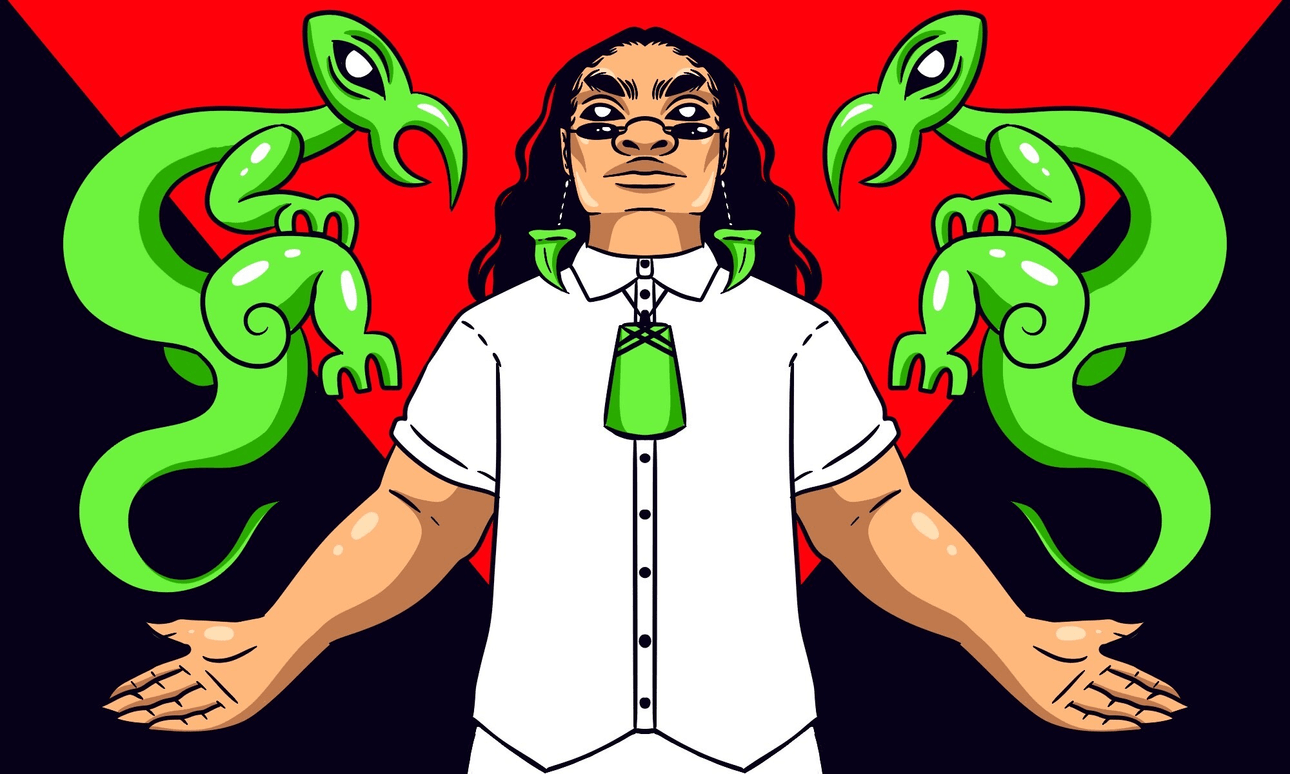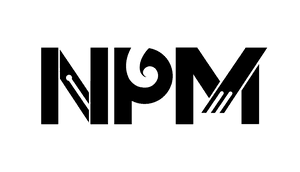How a long-running Māori-led organisation is helping tāngata kāpō Māori find both support and solidarity.
To listen to an audio recording of this story, read by author Meriana Johnsen, use the embedded player below or click here.
Nigel Ngāhiwi (Ngāti Maniapoto) was always going to be like his pāpā, a truck driver. That was, until he rear-ended one. He was just 19, the sober driver, all the passengers were drunk, and no one was wearing a seatbelt.
His kuia was by his side when the doctors delivered the news he would never see again. His response: “Yeah OK”.
“But what got me was my grandmother broke down. She started to cry, so I just grabbed her and I said, ‘Nah I’m all right, I’m all right. Don’t worry about it. It’s alright, I’m still here, I’m still here,'” he says. “It didn’t affect me like people thought it would, you know? They all thought I was going to spin out and go into this deep depression, but I just wanted to get on with it.”
Medical professionals and advocates from Royal New Zealand Foundation of the Blind (now known as Blind Low Vision NZ) were blown away by how Ngāhiwi took his new life in his stride. When visited by a support worker in hospital, Ngāhiwi told him there was “no use crying over spilt milk”.
It’s with this no-fuss attitude and a wicked sense of humour that Ngāhiwi began to navigate the world as kāpō. And it was his whānau, marae and hāpori that supported him during the transition.
He, like many others in Kāpō Māori Aotearoa, the national advocacy and support group for vision-impaired Māori, is intent on getting on with life.
However, the unseen, untold stories of tāngata kāpō and the many barriers they faced accessing services was the focus of a Ngā Pae o te Māramatanga-funded research project.
Led by associate professor Bridgette Masters-Awatere at the University of Waikato, who collaborated with chief executive of Parents Vision Impaired NZ, Dr Rebekah Graham, and chief executive of Kāpō Māori Aotearoa, Chrissie Cowan, the project invited tāngata kāpō Māori to come together and talk about their experiences during the first Covid-19 lockdown.
There is very little research which centres the experiences of tāngata kāpō Māori from a strengths-based approach and which acknowledges their self-determination. Privileging te ao Māori in this project provided a wider context to understand disability and blindness.
Having worked together previously in the health research space, Masters-Awatere and Graham collaborated with Cowan and others during the first lockdown. From that experience they began discussing the need for more research with Kāpō Māori.
“Once we put our foot in the water, we could see how murky the water is, how all the other voices speak over tāngata kāpō, how silenced Māori voices are, so we just wanted to bring to light the unseen experiences of Māori,” Masters-Awatere says.
In undertaking this work, it became clear to the two researchers that government agencies had not designed their services with blind and low-vision people in mind.
The Covid website wasn’t designed for screen-reading software, a crucial tool for tāngata kāpō when using the internet. Tāngata kāpō also had to wait over a month to receive announcement information translated in braille. When the Ministry of Health directed store owners to have separate entry and exit points, that made it difficult for tāngata kāpo and people with assistance dogs that were familiar with a particular route in and out of a shop.
Then there were the offers from government social services; food parcels or information about the wage subsidy. For many, an influx of phone calls from unknown bureaucrats offering this and that without any whakawhanaungatanga – or even just the question of, “what do you need?” – was a little hōhā. This, coupled with underlying assumptions that they even needed a food parcel was met by some with defensiveness.
“A lot of that comes from being disabled and the way in which Pākehā in health can be really patronising and not great at recognising and supporting disabled people’s own sense of agency, and so because of that, there’s a sensitivity,” Graham said.
Masters-Awatere says the feedback from participants was that tāngata kāpō Māori were being forced to choose between being either disabled, or Māori, when accessing health or social services.
“Tāngata kāpō were questioning why it needed to be an either-or – in order to access entitlements and support in order to live as I want to live, why did they need to pick between being Māori to access Māori services, or to highlight their disability to access disability services?”
“If it’s about supporting and recognising need and providing services as a basic need for everybody then why couldn’t they be both?”
This is amplified where the services just aren’t available. Resource Teachers: Vision (RTVs) are crucial for tamariki with low vision to take part in school. However, few are fluent in te reo Māori.
A kuia raising her low-vision mokopuna who was attending kura kaupapa was unable to have an RTV in the classroom, as the local RTV available did not speak te reo Māori and could only provide services in English – a practice that went against the values of the kura.
This goes to the heart of the issue, where tāngata kāpō Māori are expected to compromise on their values because of access barriers and insufficient resourcing. “If you’re coming from a place where, actually, my child being able to access the language of their land is the most important thing, then that is the most important thing,” Graham says.
The value of tāngata kāpō Māori coming together for this research was that they knew they weren’t alone.
“For the whānau we’ve been interviewing, the standard of support is that low they’ve just had to learn to adapt while at the same time recognise that the system is not set up to support them,” Masters-Awatere says.
“As the researchers who weren’t in this space every day, we decided “No that’s not good enough, it shouldn’t be allowed to continue and happen’ so we have focused on sharing their stories”.
A number of participants talked about how they were unable to access basic social services, spending ages on hold to MSD only to be told, despite it saying clearly on their file that they’re blind, that they needed to go to the website – which was inaccessible for blind users.
And as they went through the research process, Graham and Masters-Awatere realised that universities were also not much better.
Basic things like expecting staff to use cars based on fiscal policies that have an assumption of unrestrained mobility meant there were no vehicles that allowed for people who needed wheelchairs and the cars available did not have sufficient space for walkers. An additional restriction on koha value meant participants were recompensed at less than minimum wage despite the additional effort it took for them to attend.
“Organisations that do not think about access for those who may have disability don’t realise how exclusionary they are being on members of society,” Masters-Awatere says.
Despite the many barriers the tāngata kāpō Māori face, they find strength in their community. In fact, it was whakawhanaungatanga – the opportunity to talk about their shared experiences during the first 2021 Covid lockdown, and even have a laugh at them – which led many of the participants to the research in the first place, Kāpō Māori Aotearoa chief executive Chrissie Cowan says.
“We have generations of members whose confidence has just been squeezed out of them, so the main thing is we come together and enjoy each others’ company, compare notes and just celebrate being Māori,” she says.
Whānau support is the foundation of Kāpō Māori Aotearoa; it is the oldest and only national kaupapa Māori tangata whaikaha Māori-led organisation in the country, formed in 1983 by tāngata kāpō Māori and their whānau.
The organisation has around 1,500 members, including whānau of tāngata kāpō. Helping whānau to adjust to a new way of life, and how to best support their kāpō whānaunga is at the core of how the organisation runs.
When their kāpōtanga is pointed out by those in the wider community, Cowan says the response is always “Yeah, but I’m Māori first”.
From the inception of time, kāpōtanga has been a part of te ao Māori. The grandparent of Māui, Muriranga-whenua, also known as Matakerepo (cloudy vision), who gave him the jawbone which he shaped and used to fish up Te Ika a Maui, was kāpō.
This and other pūrākau of kāpōtanga are captured in Kāpo (blind) Māori in the ancient world, authored by Cowan, Kelly Tikao, Nancy Higgins and Hazel Phillips. In many of these pūrākau, kāpōtanga is a source of power, heightening the other abilities and senses of kāpō.
And this is certainly the case for Ngāhiwi.
He has met the governor general and been to parliament more times than he can count. He has a degree in performing arts from Te Whare Wānanga o Raukawa, where he also taught for a number of years. He has served as national president of Kāpō Māori Aotearoa for over 15 years. He’s kaikōrero for his marae, an advocate for kura Māori, and a Member of the NZ Order of Merit.
He stepped up to do his first whaikōrero at 26. He had only been learning te reo Māori for a year, but as he walked into the wharenui for his uncle’s tangihanga, his mum whispered in his ear, “I think it’s you”.
Well, as you can imagine, Ngāhiwi says he felt all the wiriwiri. Yet, while he’d only been learning for a short time, the reo was within him. Raised by his koro and kuia, both fluent speakers, he had grown up with the reo, even though it wasn’t spoken directly to him.
And since then, with support from his kaumātua and dedicated study of te reo, Ngāhiwi has sat on the paepae for his marae ever since.
Ngahiwi says getting around his marae is “māmā noa iho [easy as]”.
“Mōhio pū nei au taku marae. Kei whea te aha, pēwhea rā te haerenga mai tēnei taha ki tērā taha – I know my marae because I grew up there… I know every nook and cranny of my marae”.
Whānau have always been ever-present by his side. That has at times bought challenges, he says, particularly in the early days where his whānau would offer to do everything for him. But the more he told them waiho, the more he showed him he could live independently.
There’s very few things Ngāhiwi needs support with these days, besides getting around. His hoa rangatira Ripeka, their son and daughters are there to give him a hand navigating busy crowded spaces, or driving to and from the many events and meetings Ngāhiwi has.
It is the strength of the collective: whānau, hapū, iwi and hāpori kāpo Māori, that enables kāpō like Nigel Ngāhiwi to live full and independent lives. In spite of the barriers, hei aha te; they might be kāpō, but they’re Māori first and foremost.

